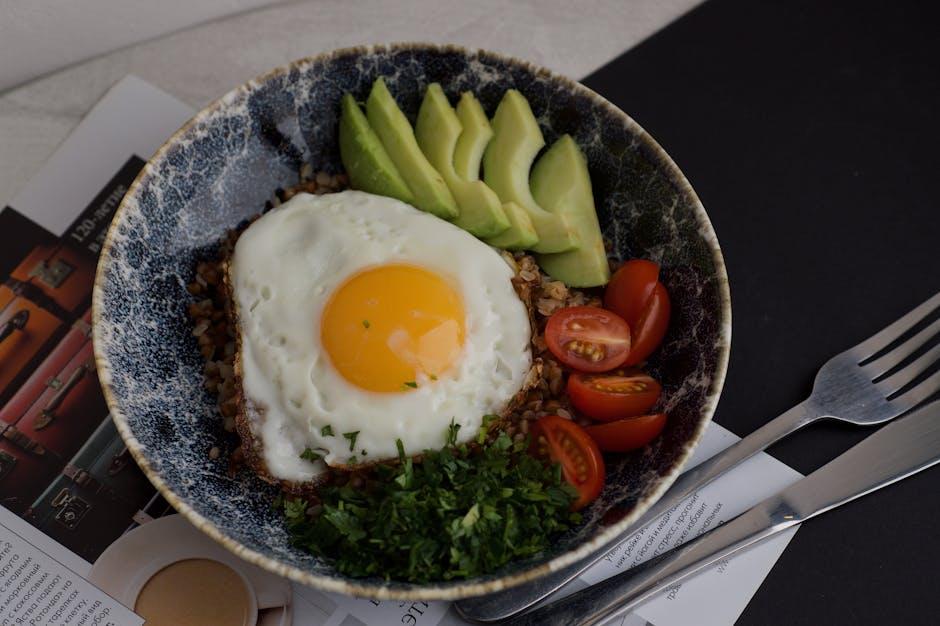In a world where culinary choices are as diverse as the stars in the sky, crafting a meal plan that harmonizes taste with nutrition can feel like navigating a galaxy of possibilities. Imagine a journey where every bite fuels your body and every meal dances in perfect harmony with your health goals. Welcome to the art of building a meal plan based on nutritional content—a delightful fusion of science and creativity, where you become the maestro of your own dietary symphony. This guide will illuminate your path with vibrant colors of optimism, empowering you to create nourishing meals that not only satisfy your palate but also invigorate your spirit. So, grab your apron and let’s embark on this exciting adventure toward a healthier, more vibrant you!
Crafting a Balanced Plate: Embrace Nutritional Diversity
When constructing a meal plan that celebrates nutritional diversity, the key is to blend vibrant colors, textures, and flavors onto your plate. Imagine your plate as a canvas, where each food group plays a crucial role in the masterpiece of balanced nutrition. Start by filling half of your plate with a variety of vegetables and fruits—think leafy greens, bright berries, and crunchy carrots. This not only adds a splash of color but also a wealth of vitamins, minerals, and antioxidants. The remaining half of your plate should be divided between lean proteins—such as grilled chicken, tofu, or legumes—and whole grains like quinoa or brown rice, providing essential amino acids and fiber for sustained energy.
- Colorful Vegetables: Aim for a rainbow—red peppers, purple cabbage, and green broccoli.
- Fruits: Opt for seasonal fruits to enjoy peak freshness and flavor.
- Proteins: Include a variety of sources to cover all essential amino acids.
- Whole Grains: Choose whole over refined grains for added fiber and nutrients.
Incorporating healthy fats is also essential. A drizzle of olive oil, a handful of nuts, or slices of avocado can elevate your dish while providing heart-healthy benefits. Embracing nutritional diversity not only enriches your diet but also ensures that you are fueling your body with the wide range of nutrients it needs to thrive. Remember, a balanced plate is not just about what you eat, but how these foods work together to support your health and well-being.

Decoding Nutritional Labels: Your Guide to Informed Choices
Creating a meal plan centered around nutritional content is like crafting a masterpiece, where each ingredient plays a vital role in your health canvas. Begin by examining the macronutrients on the label: carbohydrates, proteins, and fats. Aim for a balanced approach where each meal includes a combination of these three. Look for foods with high fiber content to promote digestion and maintain a feeling of fullness. Don’t shy away from healthy fats found in avocados and nuts; they are essential for brain health and energy.
- Proteins: Opt for lean sources like chicken, fish, or plant-based proteins such as beans and lentils.
- Carbohydrates: Choose whole grains and vegetables to ensure you are getting complex carbs.
- Fats: Incorporate sources like olive oil and seeds for a heart-healthy diet.
Pay attention to the micronutrients—vitamins and minerals—that are listed further down the label. These are your body’s secret weapons for staying energized and resilient. Foods rich in Vitamin C, like bell peppers and strawberries, or iron, such as spinach and quinoa, should make regular appearances in your meals. Remember, the goal is to eat a rainbow, ensuring a diverse and vibrant nutrient profile that will keep you thriving day in and day out.
Supercharge Your Meals with Essential Nutrients
Crafting a meal plan that prioritizes nutritional content is a game-changer for anyone looking to boost their energy and well-being. The key is to focus on incorporating a variety of essential nutrients into your daily diet. Consider adding a vibrant mix of colorful vegetables such as spinach, carrots, and bell peppers, which are packed with vitamins and antioxidants. Complement these with lean proteins like chicken, tofu, or lentils to fuel muscle repair and growth.
Don’t forget to include whole grains for a sustained energy release throughout the day. Quinoa, brown rice, and oats are excellent choices. Lastly, sprinkle in some healthy fats such as avocados, nuts, and olive oil to aid in nutrient absorption and keep you feeling satisfied. Here are some quick tips to ensure your meals are nutrient-rich:
- Start your day with a nutrient-dense smoothie combining fruits, greens, and a scoop of protein powder.
- Opt for a colorful salad at lunch, adding a variety of vegetables and a lean protein source.
- For dinner, aim for a balanced plate featuring a protein, a grain, and a generous serving of vegetables.
- Snack smart with options like nuts, seeds, or Greek yogurt to keep your energy levels stable.
Personalize Your Plate: Tailoring Meals to Your Unique Needs
Crafting a meal plan that resonates with your unique dietary needs is akin to painting a culinary masterpiece. Start by identifying the essential nutrients that align with your health goals and lifestyle. Whether you’re aiming for a protein-packed diet, boosting your fiber intake, or balancing your macros, the key lies in customizing each plate. Consider these guiding stars for your culinary journey:
- Protein Power: Incorporate lean meats, tofu, or legumes to support muscle growth and repair.
- Fiber Focus: Opt for whole grains, fruits, and vegetables to aid digestion and keep you feeling full.
- Healthy Fats: Avocados, nuts, and olive oil can enhance heart health and add flavor.
Embrace the vibrant colors and textures of your chosen ingredients, and let them inspire creative combinations that not only satisfy your palate but also nurture your body. With each meal, you’re not just nourishing yourself; you’re celebrating the diverse and delicious spectrum of nutrition.



